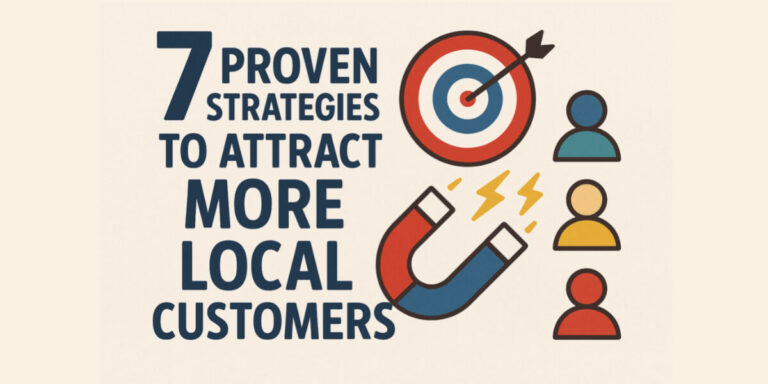
To optimize your client acquisition funnel, start by mapping your customer path to identify where prospects drop off, then create compelling lead magnets that solve specific problems for your ideal clients. Implement multi-channel nurture sequences using email and social media to build trust, while designing high-converting landing pages that drive action. Use data analytics to track performance metrics, qualify leads effectively through systematic scoring, and streamline your sales process by eliminating unnecessary steps that slow decision-making—the following insights will transform your conversion rates.
Map Your Current Customer Journey and Identify Conversion Bottlenecks

Mapping your customer path isn’t just a trendy exercise—it’s the foundation for identifying where potential clients slip through the cracks in your acquisition funnel.
Start by developing a detailed customer persona that represents your ideal client’s demographics, pain points, and decision-making process. Then, trace every touchpoint from initial awareness to final purchase, documenting each interaction they’ve had with your brand.
Journey mapping reveals critical conversion bottlenecks you might’ve overlooked. Maybe prospects abandon their cart during checkout, or they’re confused by your pricing structure.
Perhaps your follow-up emails aren’t reaching decision-makers at the right time. Track metrics at each stage—click-through rates, time spent on pages, and drop-off points. Implementing SEO best practices can also enhance your online visibility and attract more potential clients at every stage of the funnel.
This data-driven approach transforms guesswork into actionable insights, helping you optimize weak spots systematically.
Craft Compelling Lead Magnets That Attract Your Ideal Prospects
Once you’ve identified where prospects drop off in your path, you’ll need irresistible lead magnets to capture them before they disappear forever.
Your lead magnets must solve specific problems your ideal clients face daily. Effective lead magnet examples include thorough checklists, industry-specific templates, exclusive case studies, or actionable mini-courses that deliver immediate value.
Lead magnets that solve daily problems deliver immediate value—checklists, templates, case studies, and mini-courses that prospects actually want.
Don’t create generic offerings that appeal to everyone—they’ll attract no one.
Use audience segmentation to craft targeted magnets for different buyer personas. Your C-suite prospects need different resources than mid-level managers.
Create separate magnets addressing unique pain points, goals, and preferences for each segment. Test multiple formats: PDFs work for some audiences, while video tutorials resonate with others. Additionally, consider utilizing a Brand Builder to enhance your visibility through social media posting and local citation builders.
Implement Multi-Channel Nurture Sequences to Build Trust and Authority

After capturing qualified leads with your targeted magnets, you’ll discover that single-channel email sequences aren’t enough to build the deep trust today’s buyers demand.
Modern prospects engage across multiple touchpoints, requiring a coordinated approach that reinforces your message consistently. Your nurture strategy should integrate email marketing with complementary channels.
Start with automated email sequences that deliver valuable insights, then amplify your presence through targeted social media content. Share behind-the-scenes stories, client success cases, and industry expertise across platforms where your prospects spend time.
Coordinate timing across channels so your LinkedIn posts complement your email themes. When someone receives your Tuesday newsletter about market trends, they’ll see related insights on your social feeds.
This multi-channel consistency accelerates trust-building and positions you as the go-to authority in your field.
Design High-Converting Landing Pages That Drive Action
Your landing page’s success hinges on two fundamental elements that can make or break your conversion rates.
You need a crystal-clear value proposition that immediately communicates what you’re offering and why it matters to your visitor, paired with streamlined form fields that remove every possible barrier to action.
These components work together to create a seamless user experience that guides prospects toward conversion without confusion or frustration.
Clear Value Proposition
When visitors land on your page, they’re making split-second decisions about whether to stay or leave, and your value proposition serves as the decisive factor that determines their next move.
Your value proposition must clearly communicate what you offer, why it matters, and how it differs from competitors within seconds of arrival.
Effective value proposition examples share common elements: specific benefits, quantifiable results, and emotional resonance. Instead of saying “We provide marketing services,” try “We help B2B companies increase qualified leads by 40% in 90 days.” This approach transforms vague promises into concrete outcomes.
When crafting messages, focus on your client’s primary pain point and position your solution as the bridge to their desired outcome.
Test different versions to discover which resonates most powerfully with your target audience.
Streamlined Form Fields
Every additional form field you include creates another barrier between prospects and conversion, making streamlined forms vital for maximizing your landing page performance.
When you focus on form field optimization, you’ll dramatically improve your user experience and boost conversion rates.
The key is requesting only necessary information that moves prospects closer to becoming clients. Each field should serve a specific purpose in your sales process, whether it’s qualifying leads or enabling immediate follow-up contact.
Consider these optimization strategies:
- Limit fields to 3-5 maximum – Ask only for name, email, phone, and one qualifying question
- Use progressive profiling – Collect additional details through subsequent interactions rather than upfront
- Implement smart defaults – Pre-populate fields when possible to reduce friction
- Test field labels – Clear, benefit-focused labels outperform generic ones
Use Data Analytics to Track Performance and Spot Optimization Opportunities

You can’t optimize what you don’t measure, which is why tracking the right metrics becomes your roadmap to funnel success.
Start by monitoring key performance indicators like conversion rates, cost per acquisition, and lifetime customer value to understand how well your funnel performs at each stage.
When you identify where prospects drop off most frequently, you’ll discover exactly which areas need your immediate attention and resources.
Key Metrics to Monitor
Data analytics serves as your compass in charting the complex terrain of client acquisition, revealing which strategies drive results and which drain resources without delivering value.
Understanding which performance metrics matter most helps you make informed decisions that boost client engagement and overall funnel effectiveness.
Focus on these crucial performance metrics to optimize your acquisition efforts:
- Conversion rates at each funnel stage – Track how prospects move from awareness to purchase
- Cost per acquisition (CPA) – Monitor spending efficiency across different channels
- Customer lifetime value (CLV) – Measure long-term revenue potential from new clients
- Lead quality scores – Assess which sources generate the most qualified prospects
These metrics provide actionable insights that transform guesswork into strategic planning.
You’ll identify bottlenecks, allocate resources effectively, and maximize your return on investment.
Identifying Conversion Drop-Off Points
Monitoring metrics gives you the foundation, but pinpointing exactly where prospects abandon your funnel reveals the real optimization goldmine.
You’ll need to analyze user behavior at each stage, identifying specific moments when engagement drops dramatically. Heat mapping tools show you where visitors hesitate, while session recordings reveal their actual path through your pages.
Focus on change points between funnel stages—these often harbor the biggest conversion killers. Maybe your pricing page loads too slowly, or your contact form asks for excessive information.
Perhaps your value proposition isn’t compelling enough at critical decision moments.
Track abandonment patterns across different traffic sources and demographics. What conversion triggers work for one segment might fail for another.
Use A/B testing to validate your hypotheses about drop-off causes, then implement targeted fixes for maximum impact.
Qualify Leads Effectively to Focus on Your Best Prospects
While generating leads might feel like the ultimate victory, treating every prospect equally will drain your resources and dilute your efforts. You need a systematic approach to identify which prospects deserve your immediate attention and investment.
Lead scoring transforms your qualification process by assigning numerical values to prospect behaviors, demographics, and engagement levels. Meanwhile, prospect profiling helps you create detailed buyer personas that guide your targeting decisions.
Implement these qualification strategies:
- Set clear criteria for budget, authority, need, and timeline before engaging prospects
- Track engagement patterns like email opens, website visits, and content downloads
- Prioritize prospects who match your ideal customer profile characteristics
- Use qualifying questions during initial conversations to assess genuine interest
This focused approach guarantees you’re investing time in prospects most likely to convert into paying clients.
Streamline Your Sales Process to Close More Deals Faster

Once you’ve identified your most promising prospects, the speed and efficiency of your sales process determines whether they’ll become clients or slip away to competitors.
You need to eliminate unnecessary steps that slow down decision-making. Map out your current process and identify bottlenecks where prospects get stuck or lose interest.
Create standardized templates for proposals, contracts, and follow-up communications. This consistency reduces preparation time while maintaining professionalism.
Implement a clear timeline that sets expectations for both you and your prospects.
Regular sales training keeps your team sharp and adaptable to changing market conditions. Focus on objection handling and closing techniques that match your specific industry.
Don’t forget to collect client feedback after successful closes. This insight reveals which parts of your process work best and which need improvement.
Frequently Asked Questions
How Much Budget Should I Allocate to My Client Acquisition Funnel?
You’ll need budget allocation based on thorough cost analysis of your conversion rates and customer lifetime value. Start with 10-15% of revenue, then adjust based on performance metrics and ROI data.
What’s the Ideal Length of Time for a Complete Acquisition Funnel Cycle?
Your funnel stages typically span 30-90 days for most businesses. You’ll need timing strategies that match your industry’s sales cycle – B2B takes longer than B2C, while high-ticket services require extended nurturing periods.
How Do I Handle Objections From Prospects During the Acquisition Process?
Like a skilled surgeon addressing patient concerns before surgery, you’ll master objection handling by listening actively, acknowledging fears genuinely, then providing evidence-based solutions. This approach transforms resistant prospects into engaged clients through strategic prospect engagement.
Should I Outsource Funnel Management or Keep It In-House?
You’ll find outsourcing benefits include specialized expertise and cost savings, while in house advantages offer greater control and brand alignment. Consider your budget, team capabilities, and desired oversight level when deciding which approach suits your business best.
How Do I Prevent Competitors From Stealing Prospects in My Funnel?
Guard your prospects like treasure! Implement lead protection strategies through exclusive offers and rapid follow-up sequences. Use competitor analysis techniques to monitor their tactics, then outmaneuver them with superior value propositions and personalized engagement.
Final Thoughts
The Pareto Principle proves true here—80% of your results come from 20% of your efforts. You’ve now identified which funnel elements generate maximum impact. Your optimization process doesn’t end with implementation; it requires continuous testing and refinement. Start with your biggest bottleneck, implement one change at a time, and measure results before moving forward. Remember, sustainable growth happens when you perfect each step methodically rather than rushing through all seven simultaneously.
- Writing Content That Converts Visitors Into Customers - 04/11/2025
- How to Plan a Content Calendar That Works - 29/10/2025
- SEO Content vs. Social Media Content: What’s the Difference? - 23/10/2025




